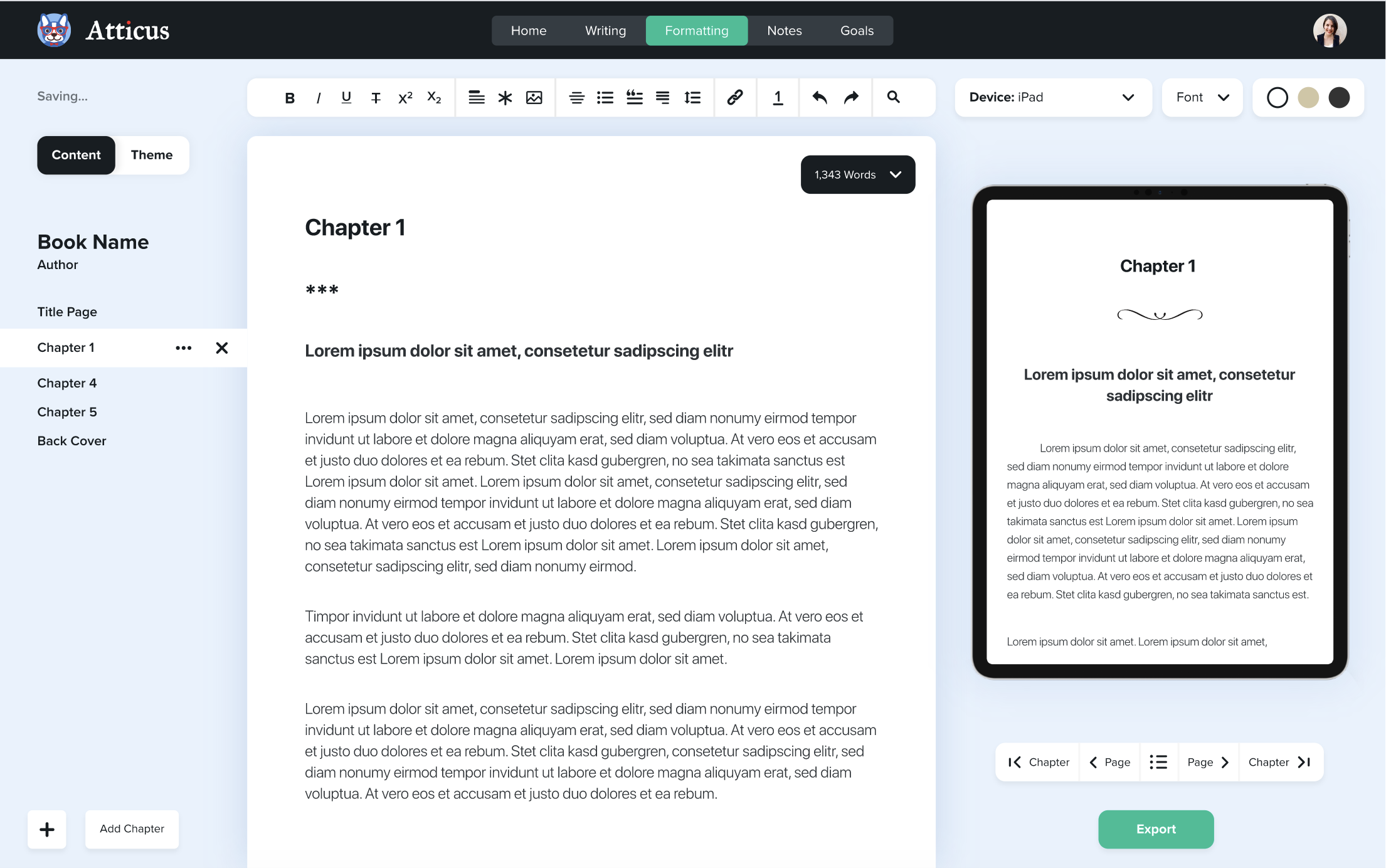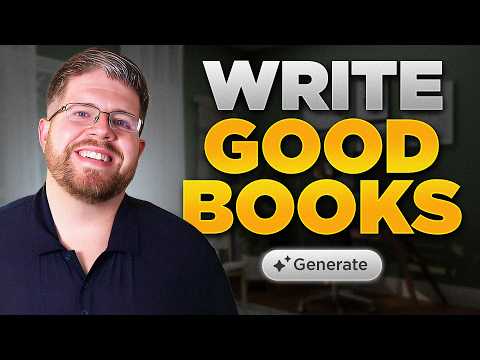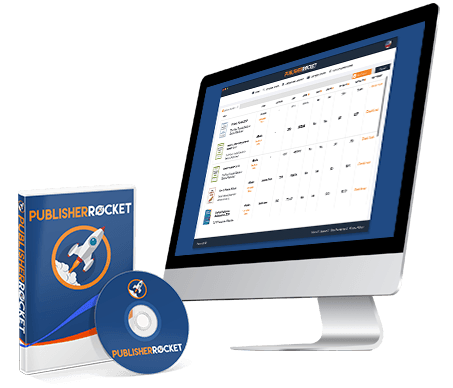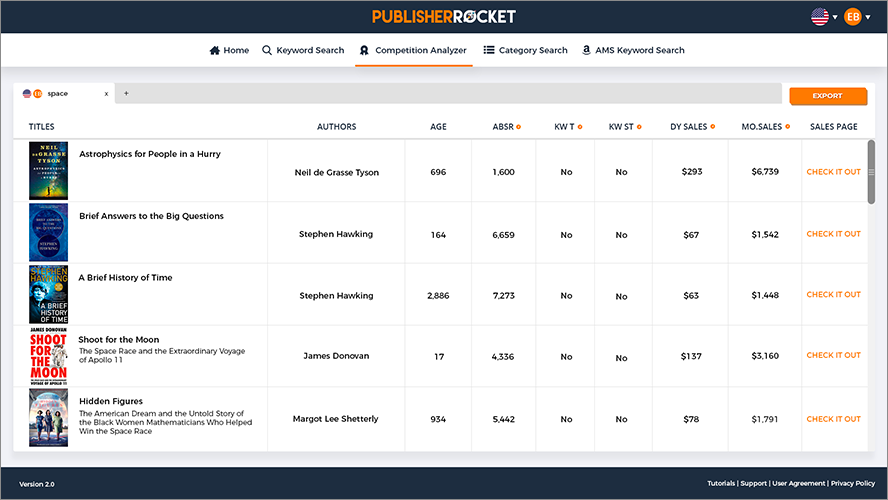Like it or not, AI is changing the way we work. That trend isn’t slowing down anytime soon, no matter what regulations come along.
Writers who learn how to use these tools now will have a big advantage. You’ll work faster, write better, and be more valuable to clients and employers.
In this article, I’ll show you how to use ChatGPT to write a book, share my thoughts on the tool, and explain what makes it different from other writing software.
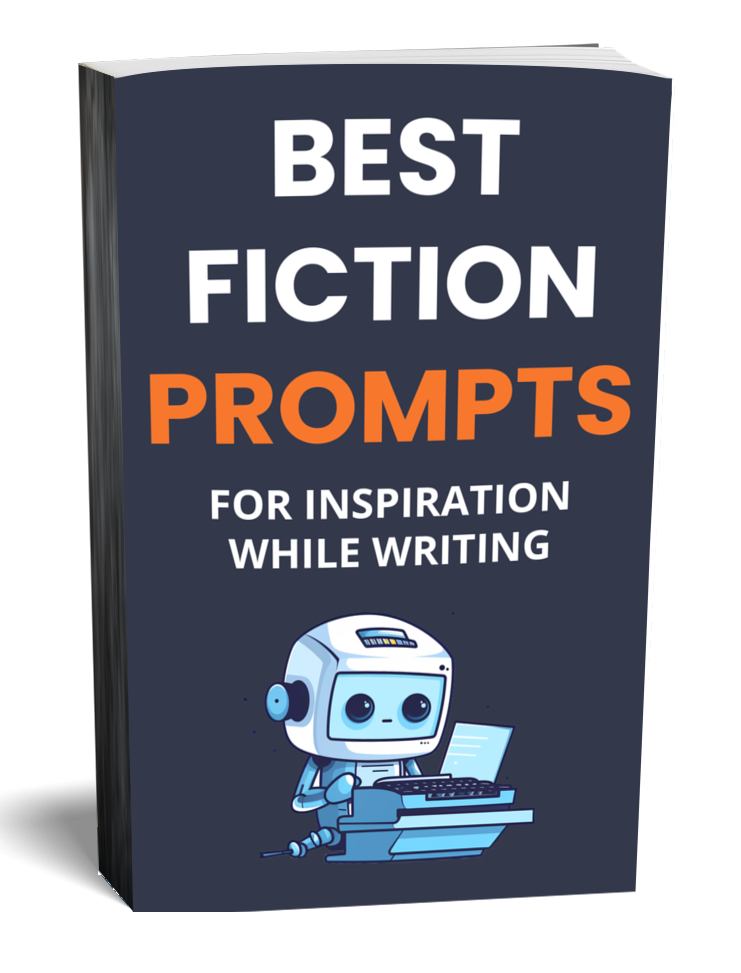
I've put together a list of prompts that you can use for just that purpose!
Check them out here:
Additionally, if you'd like to know more about how author can leverage AI, I'd invite you to check out my Story Hacker community, where we have dedicated teachers on various topics, including AI writing tools like this one.
Table of contents
What is ChatGPT?
ChatGPT is an AI-powered writing assistant that responds to text prompts in a natural, conversational way. You can ask it questions, give it tasks, or ask for ideas—and it will respond with something that sounds like a real person wrote it.
Launched in late 2022, ChatGPT helped kick off the current wave of AI interest. After it took off, tech giants like Microsoft and Google jumped into the race to develop competing tools.
But for writers, ChatGPT isn’t just a novelty. It can help you brainstorm story ideas, build outlines, get past writer’s block, and even generate full paragraphs of prose (though you’ll almost always want to revise what it writes).
As of now, ChatGPT includes a mix of AI models:
- GPT-4o mini – A fast, free model that works well for everyday tasks.
- GPT-4o – The most advanced model, with capabilities across text, audio, and images. Free users get limited access.
- o1 and o1-mini – Newer models focused on logic and reasoning.
- o3-mini – Another advanced model designed for reasoning tasks. It’s strong with logic but less helpful for creative writing.
Formatting Has Never Been Easier
Write and format professional books with ease. Never before has creating formatted books been easier.
Click here to see it in actionHow Much Does ChatGPT Cost?
There are three main ways to use ChatGPT:
- Free – This gives you basic access to GPT-4o mini and limited access to GPT-4o. It’s a good starting point for experimenting, but it has usage caps and fewer features than the paid versions.
- ChatGPT Plus – At $20 per month, this tier offers extended usage limits, file uploads, image generation, and access to GPT-4o with better performance. It also includes limited access to the newer o1 and o1-mini models. When people refer to a “paid ChatGPT account,” they’re almost always talking about Plus.
- ChatGPT Pro – Priced at $200 per month, this plan offers the highest levels of usage. You get full access to the o1 model (sometimes called o1 pro), priority processing, and faster response times (ideal if you're doing large-scale writing or frequent AI work).
Is ChatGPT Plus worth it?
If you plan to use ChatGPT for in-depth plotting, worldbuilding, or drafting actual prose, then yes, ChatGPT Plus is worth the upgrade. The extra speed and access to more powerful models can make a big difference in how productive you are.
But if you're only using it now and then (for brainstorming ideas, summarizing articles, or helping you outline), the free version will probably do the job just fine.
As for ChatGPT Pro at $200 per month, most writers won’t need it. That plan is geared more toward businesses or power users who rely on AI all day and need the highest usage limits.
If you want more videos like this talking about the practical uses of AI in writing and marketing, be sure to subscribe to the channel.
What Are ChatGPT’s Strengths (Compared to Other Tools)
ChatGPT has emerged as a frontrunner among many AI tools and models. However, there are other tools like Sudowrite, Novelcrafter, Claude, or even OpenAI’s Playground that all have different and unique offerings.
So what makes ChatGPT unique?
Well, after having written tens of thousands of words with a variety of tools and platforms, I have several unique strengths that I’ve seen in ChatGPT that keep me coming back.
Better at Following Directions
One of ChatGPT's standout features is its ability to follow directions. While many AI tools can process instructions, ChatGPT does so with a precision and context-awareness that is hard to get with some other tools.
This means fewer errors, more accurate outputs, and less chance that the AI will wander off of the guardrails you’ve given it.
Better at Defined Structures and Logic
This is a little harder to pin down, exactly, but those who have been using ChatGPT for a while, and comparing to other platforms, will agree that ChatGPT is much better at structure, and providing structured answers.
Again, it’s hard to find a way to say it better than that.
ChatGPT usually provides answers that are easier to scan, are broken down nicely into a format, plus it’s also much better at following directions when you provide specific frameworks or examples to follow.
Code Interpreter
Code Interpreter is a feature that ChatGPT Plus users can use. It’s actually kind of mindblowing.
Basically, you can ask it to perform any reasonable task, and ChatGPT will write the code it needs to perform that task. It actually writes its own code.
For authors, this is particularly useful if you have some documents to upload to ChatGPT, then ask it to perform a specific task with those documents. The possibilities are quite extensive.
Custom Instructions
Every user is unique, and so are their requirements. Recognizing this, ChatGPT offers the ability to provide custom instructions. This means you can tailor the AI's responses to fit specific needs, ensuring personalized and relevant outputs.
It does this by giving you a field where you can input your custom style or information you want the AI to know, and it will remember those things for the entire chat, no matter how long the chat continues.
This is great, because previously it would eventually forget the things you told it in your initial prompt. With Custom Instructions, that doesn’t have to happen.
GPTs and Projects
ChatGPT Plugins allow the AI to perform specific, repetitive, or niche tasks that require additional setup. These can be set up by you, or you can use one created by someone else.
Projects are similar, but more private, and can involve multiple chats that all have the same instructions.
Canvas
Canvas is a feature that lets you edit the text of ChatGPT's output, almost like having a document right inside of ChatGPT that can be edited and manipulated by the AI.
How to Write a Book in ChatGPT
My approach to writing a book with ChatGPT is similar to what you'd do in other AI platforms, like Claude or OpenAI's Playground.
The main differences come down to the tools ChatGPT offers, such as the Code Interpreter, custom instructions, and other advanced features.
That said, here’s my seven-step system for using ChatGPT to write a book. You can apply it to the whole process, or just the parts where you need the most support.
For example, I enjoy outlining, so I usually do that part myself. But when it comes to other steps, ChatGPT has proven to be a huge help.
Step 1: Brainstorm
Brainstorming is the creative groundwork for your novel. Here, you'll gather ideas, themes, and concepts that resonate with your story.
It's all about letting your imagination run wild and capturing the sparks of creativity.
Personally, I always start by brainstorming my premise and my ending, if I don’t know what they should be already.
Here are some prompt I’ve used:
Give me [NUMBER] high-concept pitches for a bestselling [GENRE] story with a unique twist, intriguing characters, and gripping emotional stakes.
Given the following premise and story information, give me [NUMBER] possible endings to this [GENRE] novel.
Step 2: Synopsis
The synopsis is a concise summary that encapsulates the main plot points of your novel. It helps you understand the flow of your story and ensures that the critical elements align cohesively.
You can expand upon your brainstormed premise and ending using a prompt like the following:
Given the following premise and story information, give me a highly detailed synopsis for a [GENRE] story in the traditional three act structure. Each act should be clearly labeled and should build toward the ending I've described.
Premise:
Ending:
Other Information:
Step 3: Characters and Worldbuilding
Characters are the heart of your story, and worldbuilding sets the stage on which they perform. There are many prompts you could use here, but here is a sample prompt for developing a character profile:
Write a character profile about the protagonist/antagonist/mentor of this novel:
[INSERT SYNOPSIS]
Here is what we know so far about this character: [INSERT CURRENT SUMMARY OF CHARACTER]
Include the following elements: [INSERT DESIRED ELEMENTS HERE]
Step 4: Outline
Outlining offers a structured view of your novel's framework. It can be as detailed or as broad as you need it to be, providing a plan that you can follow as you write.
From your synopsis, you can expand it further into a fully fleshed out outline:
Using the following synopsis, create a detailed summary of the story, fleshing out additional details, and breaking it into parts using the [OUTLINE METHOD OF CHOICE]:
[INSERT SYNOPSIS HERE]
Step 5: Story Beats
When creating a story with AI, it helps to have an intermediate step between the outline and the actual writing. So fleshing out the outline into individual story beats (essentially a highly-detailed outline of each chapter), can look something like this:
Take the following chapter summary, and generate a list of 12 highly detailed action beats for a script with additional STORY INFORMATION to fully flesh out the chapter. Make sure to always use proper nouns instead of pronouns.
[INSERT CHAPTER SUMMARY HERE]
Step 6: Style
A style prompt is possibly the most important prompt on this list, as it will affect how the prose sounds when you use AI to generate prose.
Style prompts can be lengthy, depending on how you use them. I've seen some that go on for hundreds of words, but here is one example of a shorter one that could work:
First person past point of view of [MAIN CHARACTER], show don't tell, deep point of view. Realistic dialogue. Stronger verbs. Lots of conflict, drama, and description. Avoid mushy descriptions/dialogue.
Better Keywords & Categories Fast
See why over 47,000+ authors and publishing companies use and love Rocket to help them sell more books.
Get Publisher Rocket Now!Step 7: Prose
Last but not least, it's time to create the prose prompt. Now many, if not most, authors will not be using AI for this step, and that's okay. In fact, I would say that AI is best used as a brainstorming tool.
However, there are many who DO want to write prose with AI, and I would do it something like this, using 2-3 story beats at a time.
Note that a tool like Sudowrite or Novelcrafter make this process a lot easier, removing the need for any prompt, and instead you just give it a summary of the next section of prose.
Write 600 words of a chapter using the following details:
Genre: [ENTER GENRE HERE]
Tone: [ENTER TONE HERE]
Point of View: [ENTER POV/TENSE HERE]
Setting: [ENTER SETTING HERE]
Key Characters in This Scene: [ENTER CHARACTER DETAILS HERE]
Style: [ENTER STYLE HERE]
Story Beats to Cover: [INSERT STORY BEATS]
Other Resources
AI is an ever-shifting resource, and so there are a few additional resources that I would recommend if you want to stay on top of it.
The first, is my own YouTube channel, The Nerdy Novelist (a personal project, not associated with Kindlepreneur) where I provide almost daily videos about the goings on in AI.
The second is my membership: Story Hackers, where you can learn everything you need to know not just about writing with AI, but a more well-rounded overview of how to publish a book and the basic principles of good storytelling.
We have multiple classes each week where you can get tailored advice for your specific situation.
So, is ChatGPT the Best Way to Write with AI?
While ChatGPT is great, it has its limitations. It takes careful prompting, and it wasn’t built for writers specifically.
Thankfully, author-focused AI tools like Sudowrite and Novelcrafter make the AI process more creative and intuitive.
The latter is an all-in-one AI platform tailored for novelists. It combines outlining, scene planning, world-building, and drafting workflows in a single interface. It works with models like GPT, Claude, and Gemini via OpenRouter and is rapidly gaining popularity among serious fiction writers.
Meanwhile, Sudowrite is carefully designed to cover tasks that authors often need, like brainstorming, character creation, and editing.
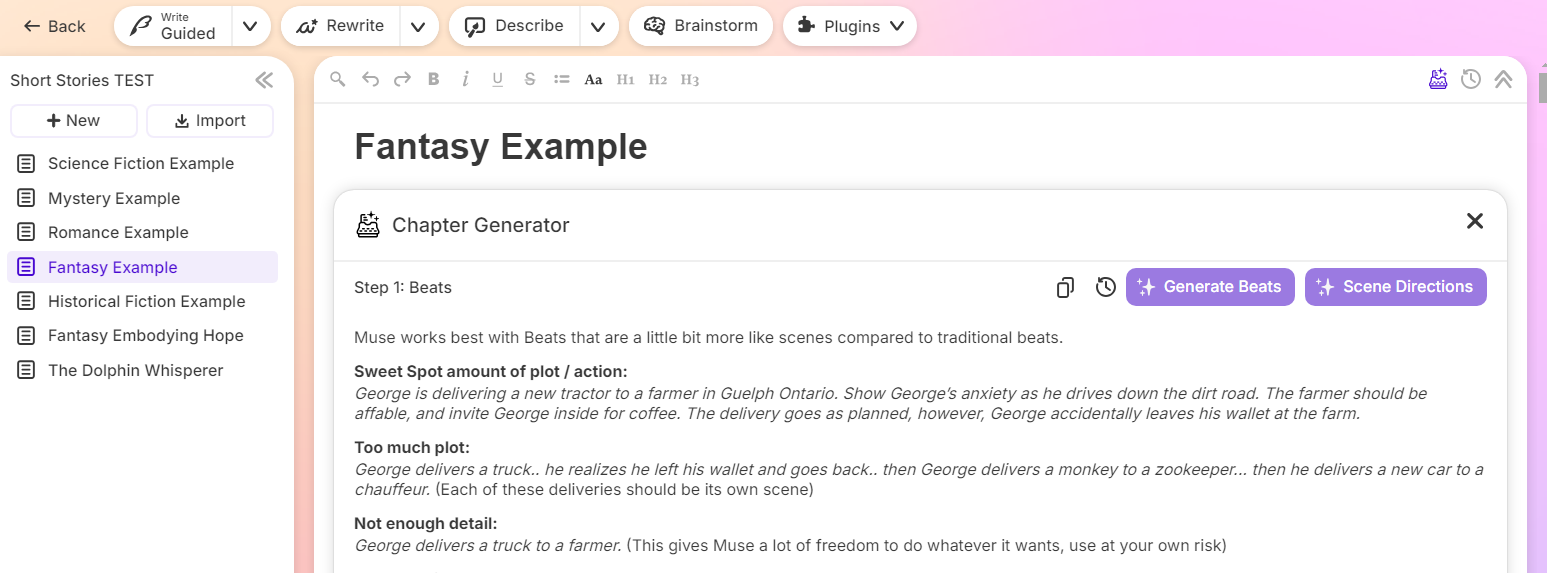
Sudowrite is packed with a lot of different features, to the point that I'm sure many of you can find something that works for you, and it's a great way to start experimenting with AI, even if you're still a little on the fence about it.
To help with that, if you use the link below, you can actually get 10,000 words for free when you sign up, meaning you can use those words to experiment further before you even pay for the tool. So check them out if you're interested.

